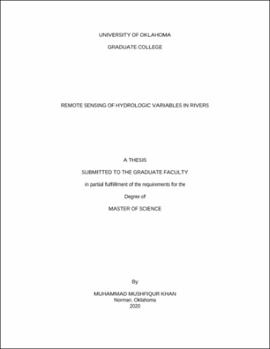| dc.description.abstract | The use of a “rating curve”, an empirical relationship between water depth in a river and the volumetric flux of water, or discharge, is subjected to uncertainty in data extrapolation, complexity due to changes in channel bathymetry, and high labor costs to maintain it. To potentially overcome these limitations, this study evaluates the efficacy of remote-sensing technologies in measuring river stage and surface velocity, which are the primary input variables for discharge computation, using automated, non-contact methods. Eight pulsed Doppler microwave radars (stream radars) have been installed on cables, culverts, and bridges across rivers at pre-determined, high-priority locations and provided year-round measurements with a temporal resolution of 5-10 minutes. Three of them are collocated with conventional streamgages operated by the U.S. Geological Survey (USGS) and U.S. Department of Agriculture (USDA), which are used as validation. The channel cross-sections are measured by total-station surveying method, while a constant (k-value) is adopted to convert the surface velocity to mean channel velocity for computing discharge. This study discovers and quantifies error in stage measurements induced by the thermal expansion and contraction of supporting structures due to diurnal temperature variation; however, these errors are deemed small and negligible. The impact of ambient wind on the retrievals of surface velocity are found to be negligible too. The results for the three collocated stations show that the radars can accurately measure stage as long as the river depths are not less than 0.08 ft. With the selection of the appropriate k-value, stream radar discharge estimates are as accurate as the conventional USGS and USDA measurements. In examining the time series of river stage and velocity, there are some events identified where the surface velocity reaches its peak 60 – 120 minutes earlier than the peak of the river stage. This time-lag has some levels of positive correlation with the magnitude of the rainfall-runoff events and is negatively correlated with channel slope, indicating a wave celerity effect. Overall, non-contact streamgaging by radars appear both effective and reliable for providing continuous, real-time discharge estimates in an operational setting. | en_US |
